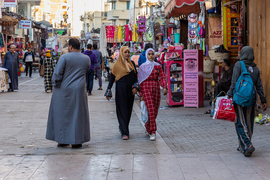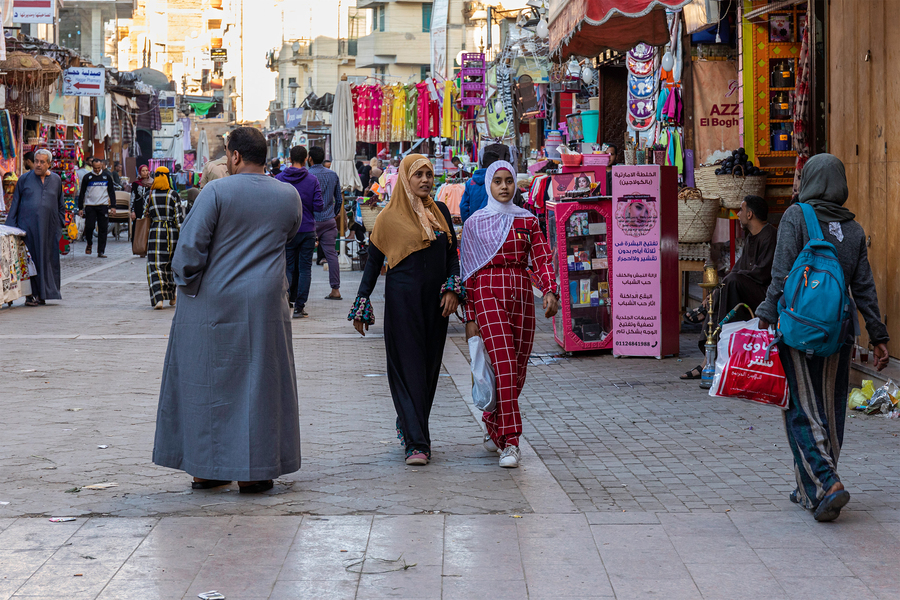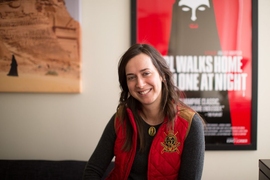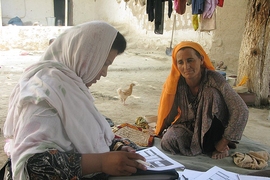The Covid-19 pandemic created a global increase in domestic violence against women. Now, an MIT-led experiment designed with that fact in mind shows that some forms of social media can increase awareness among women about where to find resources and support for addressing domestic violence.
In the randomized experiment, set in Egypt, women recruited via Facebook were sent videos via social media as well as reminders to watch television programming from a well-known Egyptian human rights lawyer focused on gender norms and violence. The study found that receiving the videos or reminders increased consumption of media content about the issue, increased knowledge about the resources available, and increased reported and hypothetical use of some resources in response to violence. The experiment did not appear to change long-term attitudes about gender and marital equity, and sexual violence, however.
“We found that women did exhibit increased knowledge of where they can find resources about what to do, and how to get informed,” says MIT Professor Fotini Christia, who led the study.
The experiment also showed the texting service WhatsApp to be the best way to ensure participants viewed the messages or videos, at least compared to Facebook in this setting.
“There was increased consumption of the content through social media,” Christia says. “We found a lot more effectiveness with WhatsApp than Facebook in terms of reaching our audience and getting the message out.”
The paper, “Empowering women facing gender-based violence amid COVID-19 through media campaigns” is being published today in Nature Human Behavior. The project is backed, in part, by MIT’s Abdul Latif Jameel Poverty Action Lab (J-PAL), which supports randomized field experiments offering solutions to poverty and other social issues.
The authors are Christia, who is the Ford International Professor of the Social Sciences in MIT’s Department of Political Science and the director of the MIT Sociotechnical Systems Research Center (SSRC); Horacio Larreguy, an associate professor of economics and political science at the Instituto Tecnologico Autonomo de Mexico, in Mexico City; Elizabeth Parker-Magyar, a PhD candidate in MIT’s Department of Political Science; and Manuel Quintero, an incoming PhD student in MIT’s doctoral Program in Social and Engineering Systems.
More information, new resources
To conduct the study, the researchers partnered with the Egyptian Center for Women’s Rights, in Cairo, to evaluate the impact of spreading its “You Are Not Alone” media campaign. In a country of about 100 million people, social media has become an increasingly common presence, with about 38 million Facebook users and 24 million WhatsApp users. (The company Meta is the owner of both Facebook and WhatsApp).
The researchers first surveyed 10,000 women on Facebook and from that enrolled 5,618 women in the experiment, which ran from July through September 2020. The women were divided into four groups that received different sets of messages on WhatsApp and Facebook about content concerning women’s resources to stop domestic violence, including links to television shows produced by the Egyptian Center for Women’s Rights; there was also a control group that received the content after the completion of the study.
Ultimately about 45 percent of the participants in the experiment visited the website hosting the television shows, and watched a mean of 2.6 episodes, among other findings. Sending people individual WhatsApp messages produced the highest yield of shows watched. By contrast, group WhatsApp messages to sets of eight to 12 women at a time led to less engagement, with only about 9 percent of WhatsApp group messages evolving into an extended conversation about the subject.
“Though WhatsApp was cost-effective in reaching women, we couldn’t use it as a way to really spur social interactions, in the ways that offline interventions have done when they stage film screenings for instance,” Parker-Magyar says. “We also made the decision not to include men, who of course play a key role in norm changes and sustaining violence. We think extensions of the research should consider how to better spur engagement in online groups and how to stage grouped online interventions addressing all audiences.”
She adds: “In the bigger picture, we did find WhatsApp useful in getting the message out given what we know about the severity of gender-based violence risks during the Covid-19 crisis.”
Prior to participating in the experiment, only 28 percent of women surveyed knew of any online resources and 22 percent knew about any organizations supporting women suffering from gender-based violence. In 2015, 36 percent of “ever-married” Egyptian women between the ages of 15 and 49 reported having experienced domestic violence. In that context, what the researchers term a “moderate” takeup of content about resources for ending violence against women can represent a significant outcome.
Survey: Similar attitudes before and after
In a follow-up survey of 4,165 of the women, from September to October 2020, the researchers also found that participating in the experiment, gaining knowledge of resources, and even watching some of the content did not change participants’ core long-term beliefs about the place of women in society.
“There were no changes in attitudes toward gender, marital equality, and the justifiability of gender-based violence,” notes Larreguy. “We were encouraged that we did see an increase in terms of womens’ knowledge of resources they could access, and not only on our partner’s organization and hotline, but instead an increase in information-seeking behavior.”
Larreguy adds: “Though we were responding in our design to really immediate needs during the Covid-19 pandemic, it was encouraging to see similar results across the television and WhatsApp content. This helps to show similar social-media based interventions might powerful or scalable even beyond the pandemic.”
Some deeply held gender norms in Egypt likely influenced this particular survey outcome. Egypt ranks 129 out of 153 countries in the World Economic Forum’s 2020 Global Gender Gap Index; only about 25 percent of women in Egypt are in the workforce.
“We think this shift is meaningful, even if it doesn’t seem massive,” Christia says.
For her part, Christia is working to expand this type of research by conducting similar experiments in countries and further evaluating the impact of such interventions.
“We want to keep looking at these types of questions about gender equity, gender inclusion, and gender-based violence,” she says.
Larreguy received funding for the project from the French Agence Nationale de la Recherche, under the Investissement d’Avenir program.










